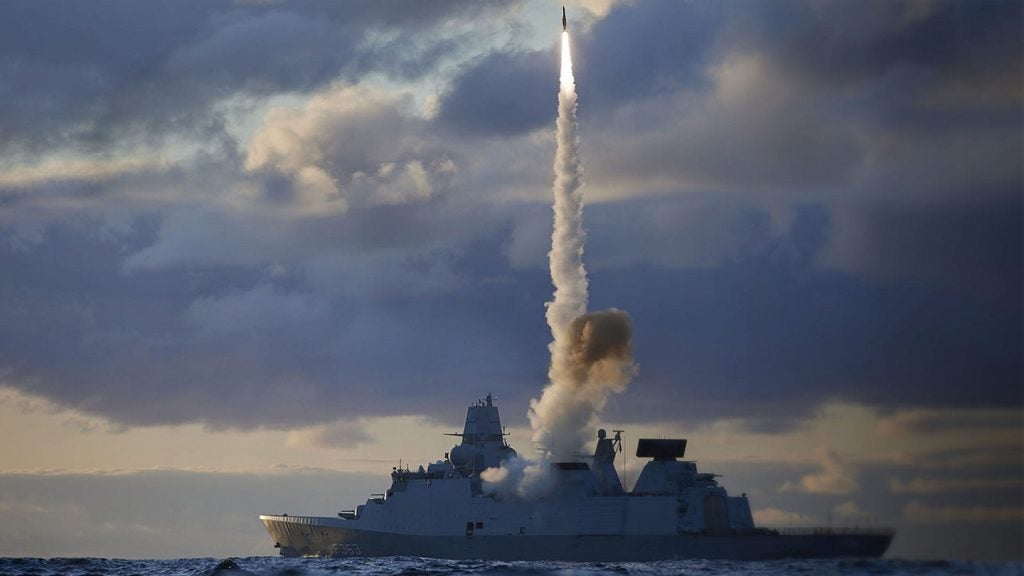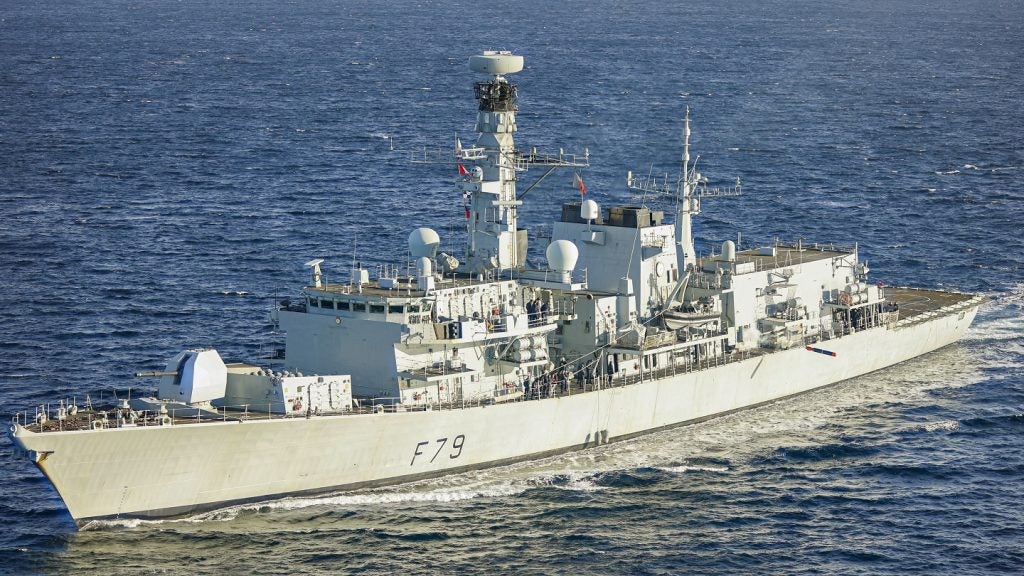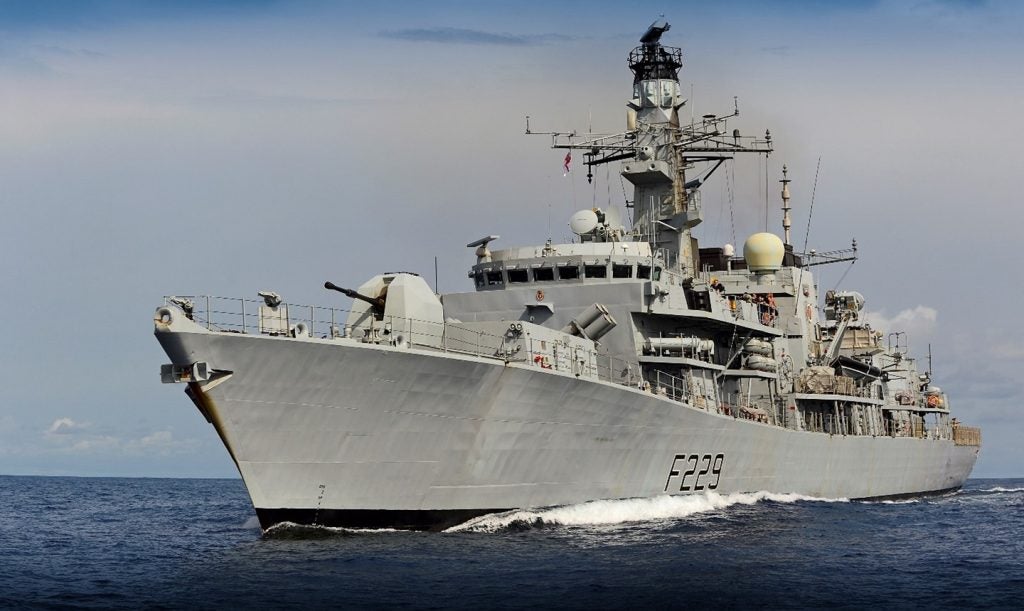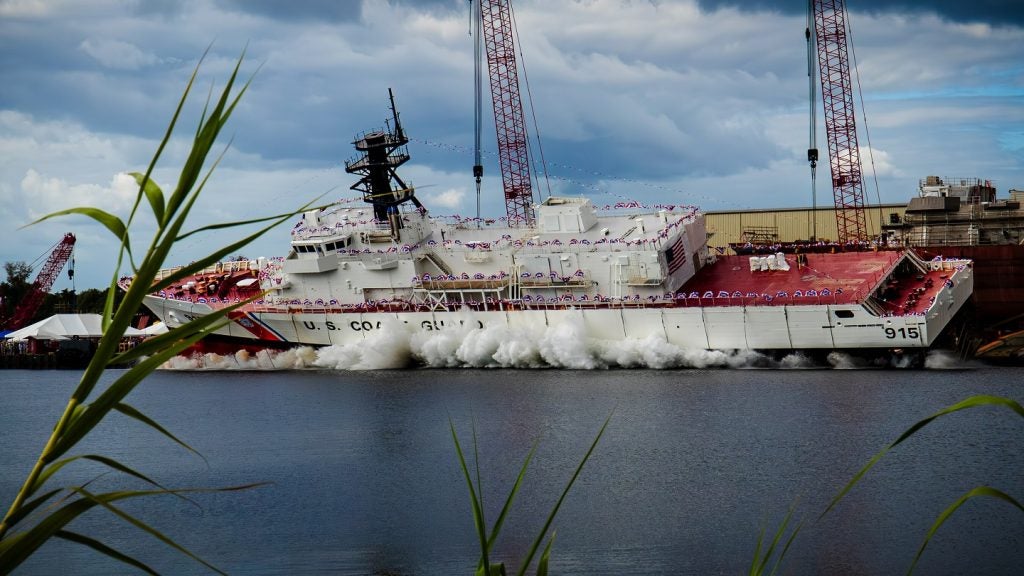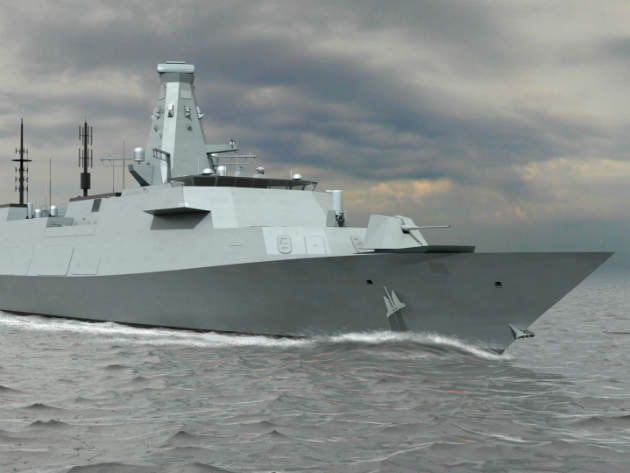
On 2 July 2017, BAE Systems announced that the UK Ministry of Defence (MoD) had signed off on a £3.7b contract for the build of the first three Type 26 Global Combat Ships. The contract was a long time coming. What had initially begun in the late 1990s as the Future Surface Combatant programme to replace the Royal Navy’s ageing Type 23 vessels had been through various iterations before the design contract was placed with BAE Systems in 2010.
The programme has had its problems, with questions raised over the size of the fleet that will replace the 13-strong Type 23 workhorse fleet (currently expected to be eight vessels, but there is no news on when the next five will be ordered), how they will be armed, and whether they will give the Royal Navy the strength it needs to face future challenges when they enter service from the middle of the next decade.
However, the government was keen to drown out the detractors with fanfare when it marked the cutting of the first steel for the Type 26s with a ceremony on 20 July at BAE Systems’ Glasgow shipyard. In addition to driving home the ‘world-class’ anti-submarine capabilities of the fleet, Defence Secretary Michael Fallon said the vessels will, ”maintain our naval power with a truly global reach. Designed for a service life of at least 25 years, the Type 26 Frigates will form a backbone of the future Royal Navy surface fleet into the 2060s.”
Naval industry renaissance
The start of the build programme also reaffirms something of a renaissance for the UK’s naval industry. Shipyards on the Clyde will be responsible for building and fitting out the three vessels, and along with work already underway by BAE Systems to build five River class offshore patrol vessels, the Type 26 build is expected to keep shipbuilders in Scotland busy for the next two decades. It is also providing the investment in cutting-edge technology that will position Britain’s shipbuilding industry on the world stage once again.
How well do you really know your competitors?
Access the most comprehensive Company Profiles on the market, powered by GlobalData. Save hours of research. Gain competitive edge.

Thank you!
Your download email will arrive shortly
Not ready to buy yet? Download a free sample
We are confident about the unique quality of our Company Profiles. However, we want you to make the most beneficial decision for your business, so we offer a free sample that you can download by submitting the below form
By GlobalDataGeoff Searle, Programme Director Type 26 Global Combat Ship, believes the offshore patrol vessel programme was critically important and has allowed them to both maintain the capability and develop and test new technologies and processes in preparation for the start of Type 26 manufacture.
“Over recent years we have invested significantly in new technologies, ways of working and infrastructure to transform the way we design and build warships,” says Searle.
“This is critical to ensuring we are able to design and build complex warships to the highest quality while ensuring value for money for our customers.”
Type 26 has benefitted from a digital design environment tried and tested as part of the offshore patrol vessel build programme.
“Making full use of our 3D visualisation suites we have been able to work closely with the MoD and Royal Navy to make refinements to the design early on and ensure that every zone of the ship has the requirements of its crew at the heart of the design,” adds Searle.
“In the production environment, Type 26 will be manufactured using some of the latest build technologies, including robotic welding and a new laser cutter machine and the new float off process that replaces the dynamic launch that will have been refined and thoroughly tested through the five ship River Class programme.”
Supply chain
In addition to shoring up BAE Systems’ order book for the coming decades, the Type 26 programme is set to secure more than 4,000 jobs across the company and its UK maritime supply chain.
And the supply chain is already looking healthy. By July there were some 33 companies – though not all British – working as part of it, with around £500 million in investment already funded.
Big names on the list include Thales, supplying the Sonar 2087 towed array system which will give the vessel its submarine-hunting capabilities; Rolls-Royce, delivering MTU diesel gensets, which will form the core of vessels’ combined propulsion systems; and Dent Steel Services, which is supplying the structural steel for the first three ships.
Future fleet
The Type 26 frigates are just over 18m longer and 2,000 tonnes heavier than their predecessors. At 149.9m the vessels will be multi-mission warships, capable of carrying out submarine warfare, air defence and general purpose operations around the globe. The vessel will be equipped with an integrated mission bay and hangar, enabling it to embark and support helicopters and fixed wing UAS.
MBDA is expected to supply the Sea Ceptor air defence system, which will be the principal air defence for the vessels and the wider task force (the company has been awarded a demonstration and manufacture contract by the MoD). In addition to Sea Ceptor, each vessel will be armed with the Mk 45 Mod 4 naval gun system, with the Artisan 3D radar forming the core sensor system along with the Sonar 2087. The vessels will displace 6,900 tonnes, move at a top speed of 26+ knots and have a range in excess of 7,000nm.
With the first vessel – to be named Glasgow – now in production BAE Systems says it is on-track for first delivery to the MoD in the mid-2020s.
“Since production began on 20 July, the main focus has been on steel work for the keel area of the first ship,” says Searle.
“Current planning assumptions are that we will then start work on the second ship approximately 25 months later and the third ship a further 20 months later.
“We also have a programme of investment that will upgrade our facilities and infrastructure to enable us to manufacture the first of class. These works will commence imminently.”
There have been no shortage of critics as to whether the MoD’s plan for the Royal Navy’s future fleet is up to the task of protecting and promoting UK interests around the globe. As the vessels continue to take shape and the fleet is fleshed out with future orders for five more ships, the programme is sure to continue to attract opposition.
For now, steel has been cut, funding is in place, and the official line is positive; as First Sea Lord Admiral Sir Philip Jones, said: “As one of the world’s most capable anti-submarine frigates, the Type 26 will carry the Royal Navy’s tradition of victory far into the future.”



